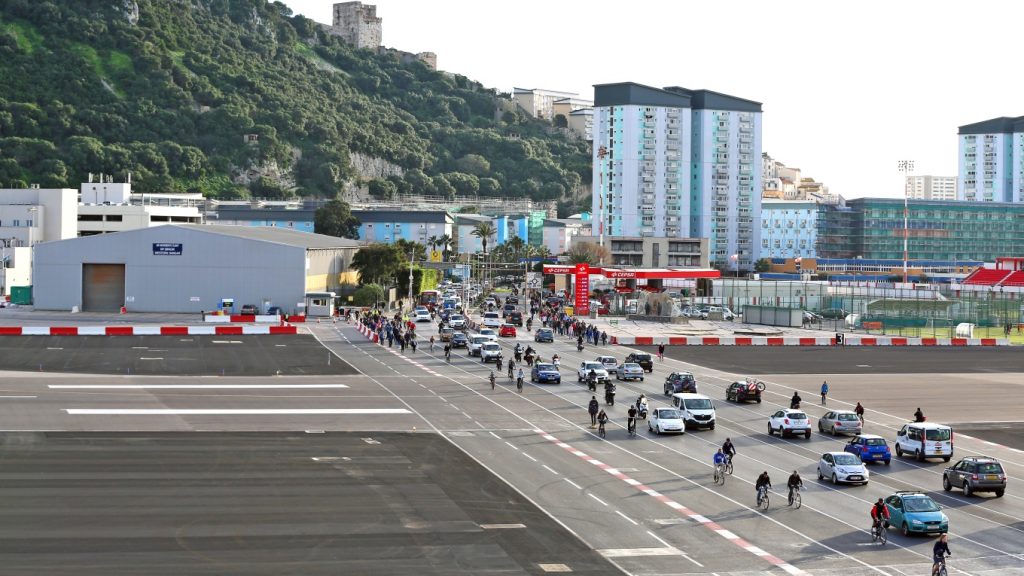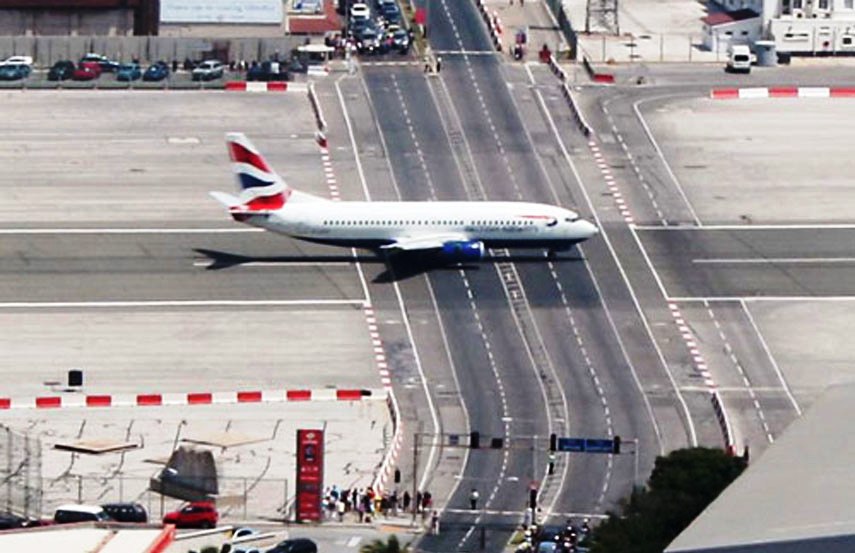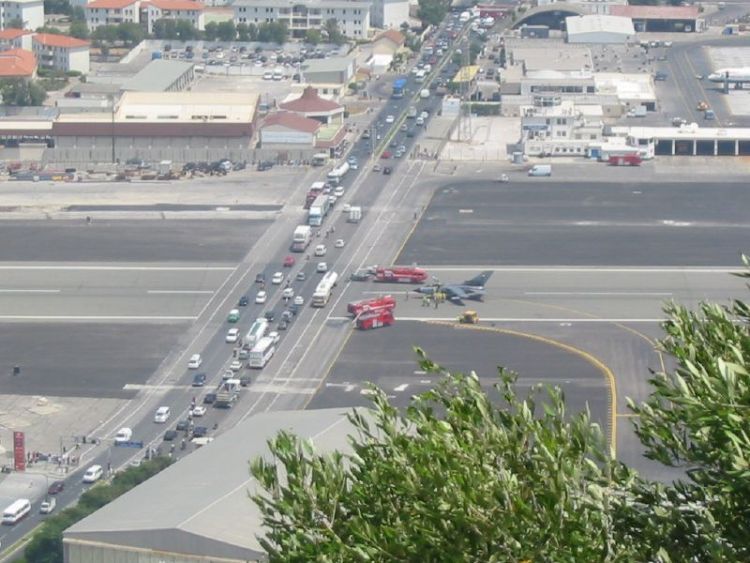Gibraltar is a small British outpost on Spain’s southern coast covering only 2.6 square miles. Yet, despite its small size, it holds one of the most challenging airports globally.
The Ministry of Defence owns Gibraltar’s international airport, which provides commercial airline services. The airport is located near the Spanish border and mainly serves British Airways and EasyJet flights to and from the United Kingdom, with Royal Air Maroc providing a few services.

Gibraltar Airport was built during World War II. The airport was constructed to the south of the Spanish border. Before being used for the airport, the area had a horse race track. When it was created during the war, the runway crossed the road from the border to the centre of Gibraltar. Previously, this proved to be a small barrier to traffic. Nonetheless, no replacement has been developed despite growing land and air traffic.
Since the airport’s runway runs almost parallel to the Spanish border, Gibraltar is practically cut off from the rest of the world. When an aircraft arrives or exits, the road is restricted by barriers and traffic lights, allowing the runway to be cleared.

Because there is no other choice except to use the runway, it may be difficult when there are several aircraft operations. The aircraft must also return across the road after landing or before departing when utilising runway 27 for arrivals or runway 09 for departures.
Recent changes at the airport have occurred due to the increased demand for both air and road traffic on the site. In 2017, passenger traffic peaked at over 500,000 per year.

To meet the growing number of passengers at the airport, the current terminal was opened in 2012. It has five gates, facilities for arriving and departing passengers, and viewing spaces on both the landside and the airside.
A tunnel is being built around the east side of the airport to handle the increased land traffic. All traffic would be shifted away from the runway due to this. Both drivers and the airport would benefit from this.

However, the novelty of the road crossing would be lost because it would only be used in exceptional circumstances. The project, intended to be finished by 2009, has been put on hold.


